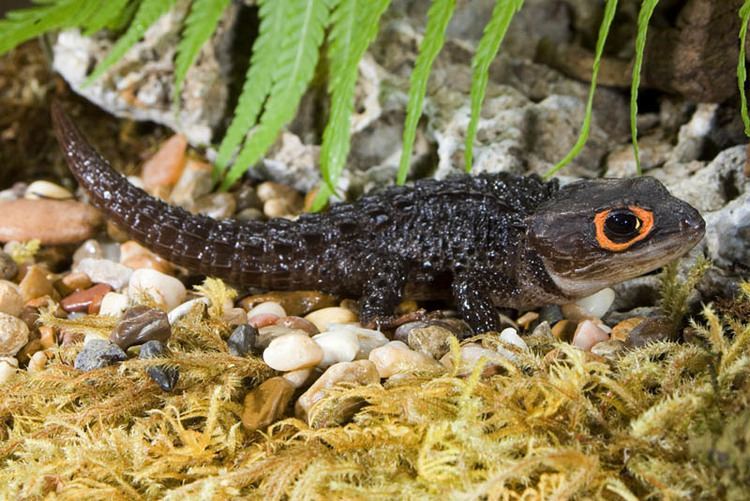Subphylum Vertebrata Infraorder Scincomorpha Genus Tribolonotus Phylum Chordata Rank Species Kingdom Animalia | Suborder Sauria Family Scincidae Scientific name Tribolonotus gracilis Higher classification Tribolonotus Order Scaled reptiles | |
 | ||
Similar Tribolonotus, Reptile, Skink, Blue‑tongued skink, Tribolonotus novaeguineae | ||
Tribolonotus gracilis is a species of skink endemic to New Guinea.
Contents
- Crocodile skink setup rainforest tank with waterfall regenwald terrarium tribolonotus gracilis
- Habitat
- Common names
- Behavior
- Reproduction
- Captivity
- References
Crocodile skink setup rainforest tank with waterfall regenwald terrarium tribolonotus gracilis
Habitat
Tribolonotus gracilis are found in New Guinea island in Indonesia and Papua New Guinea. They live in tropical forests and have also been found in human-populated areas.
Common names
They are commonly known as red-eyed crocodile skinks, or, rarely, red-eyed bush crocodile skinks.
Behavior
Tribolonotus gracilis is one of the few species of lizards that vocalize when in distress. When startled, they tend to freeze and have been known to "play dead" (even when handled).
Reproduction
Red-eyed crocodile skinks can be sexed using the pores on their front feet, as only males have these "pores". Females have only a single working ovary (right ovary), laying one egg at a time. The female often curls around the egg. They show tendencies for mother-child family groups. Male crocodile skinks will battle other males for females and females can be territorial as well.
Captivity
Red-eyed crocodile skinks are popular in the pet trade but are still considered exotic pets. For captivity they require a large terrarium that can withstand high humidity that the species requires. For nutrient most red-eyed crocodile skinks eat a variety of insects such as fruit flies, mealworms, and small crickets. Like most species of reptiles in captivity, most reptiles need a calcium supplement with their regular food.
